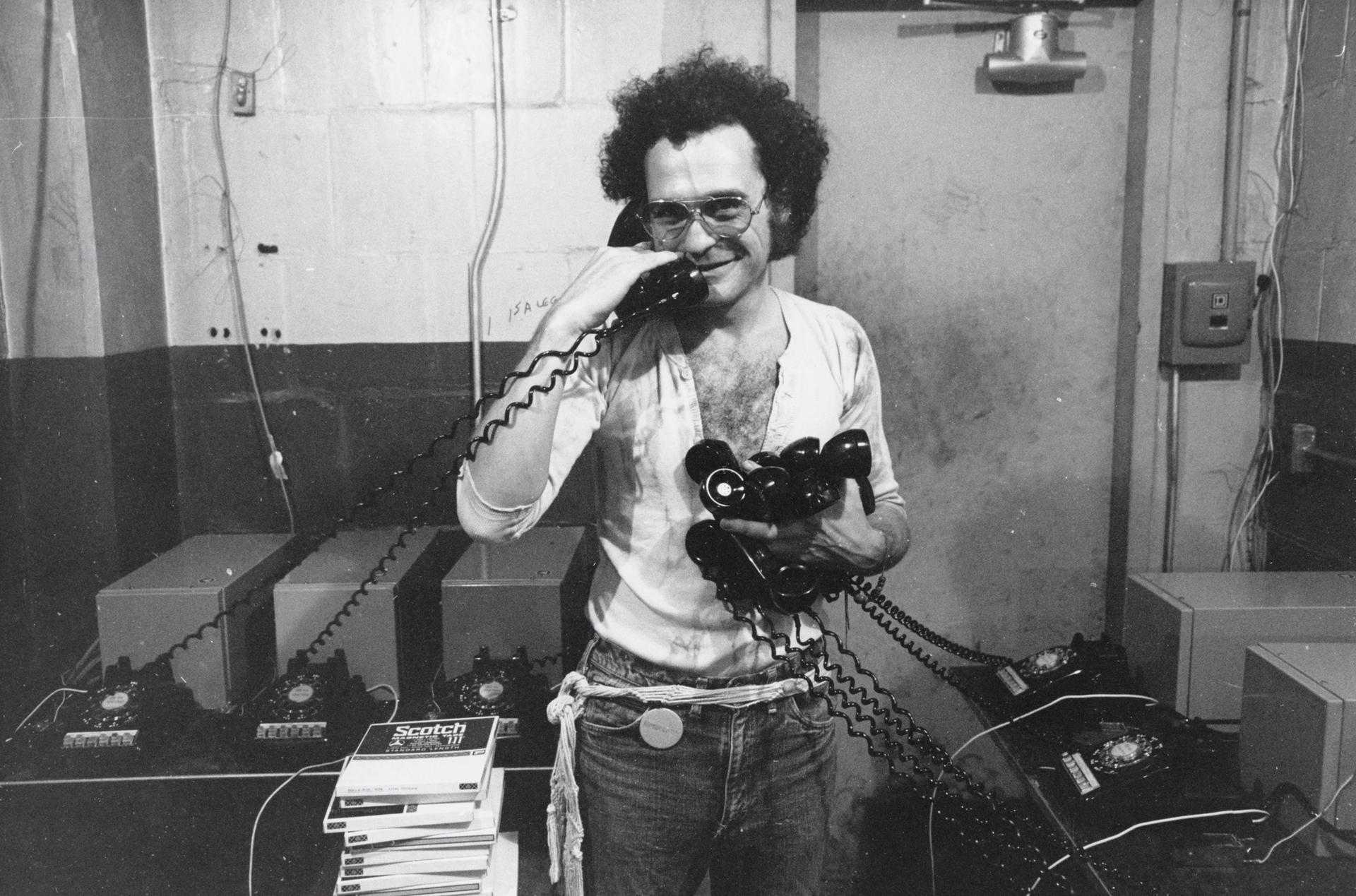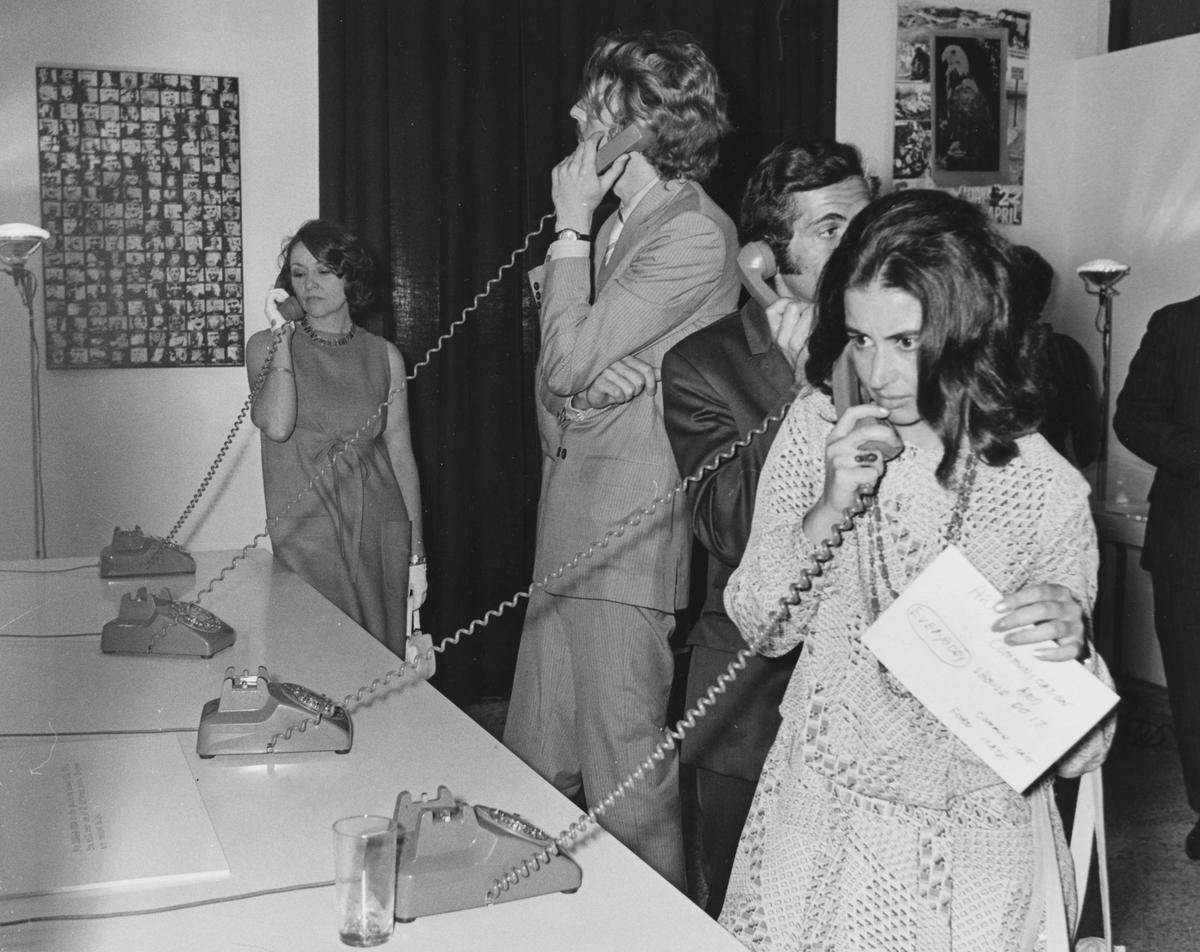One of John Giorno’s most important audio works, the Dial-a-Poem project, is coming to the UK, giving callers a chance to hear recordings from an archive of poetry and political oration first produced in 1968. The new phone service coincides with a show of works by the late US artist at Almine Rech in London (12 October-13 November). The gallery will also present the phone project in the exhibition and feature the number on its stand at Frieze London (13-17 October). The phone number is +44 20 4538 8429.
Access to Dial-a-Poem, developed in collaboration with the New York-based John Giorno Foundation, will be available free of charge to local callers. “Initially it was a challenge,” says Elizabeth Dee, the foundation director. “We’ve had to-recode all of the files; the plan is for the phone line to be active long term. John was always at the forefront of technology.”

John Giorno's Dial-A-Poem (1970) Photo: Unknown. Courtesy of the John Giorno Foundation, New York, NY
Dial-a-Poem, whereby people could ring a phone number and hear poetry by writers such as Anne Waldman and John Ashbery, as well as civil rights speeches, was one of Giorno’s most significant innovations.
“I sort of stumbled on it by chance—this phenomenon of connecting a telephone with content and publicity. I was talking to someone on the telephone one morning, and it was so boring. I probably had a hangover and was probably crashing, and I got irritable and said to myself at that moment, ‘Why can’t this be a poem?’,” Giorno told Interview magazine.
The service transformed how poetry was disseminated and consumed but the project was nearly scuppered after the mother of a 12-year-old boy based in Queens took offence at a piece called The Celia Sisters by Jim Carroll, taken from his memoir The Basketball Diaries (1978). But the telephone company buckled and reconnected hundreds of thousands more callers to the service.
In 1970, the piece was shown at the Museum of Modern Art in New York in an exhibition called Information. A press release for the show says that “each of the poems were specifically written for the Information show. Each is about two minutes long and falls within the category of found poetry, black poetry, New York school poetry, chance poetry or pop poetry.”
“John was tickled by the Carroll incident,” Dee says. “Going through his archives, we also discovered a letter by the [then] director of the Museum of Modern Art in New York to the trustees, saying that the FBI had investigated John for this ‘subversive act’.”
“Those texts and poems are of the time [1960s] but we’d like to work with other foundations to bring the concept forward,” Dee adds, saying that the foundation plans to launch Dial-a-Poem in Mexico in collaboration with the Casa Wabi foundation in the southern state of Oaxaca. “We’ll invite indigenous artists, poets and musicians to contribute to the concept.”
Almine Rech gallery presents two bodies of work in its London show by Giorno titled Rainbow (2015) and Perfect Flowers (2017), a series of luminous prints emblazoned with poetic text by the artist such as “Daffodils Baptized in Butter”.
Giorno was born in New York in 1936, and worked as a stockbroker after graduating from Columbia University in 1958. Reading Allen Ginsberg’s seminal poem Howl at college “blew his mind”, Giorno said, and from his storied building on 222 Bowery known as the “Bunker”, in the early 1960s he set about changing how poetry is perceived and created. He died in 2019.


